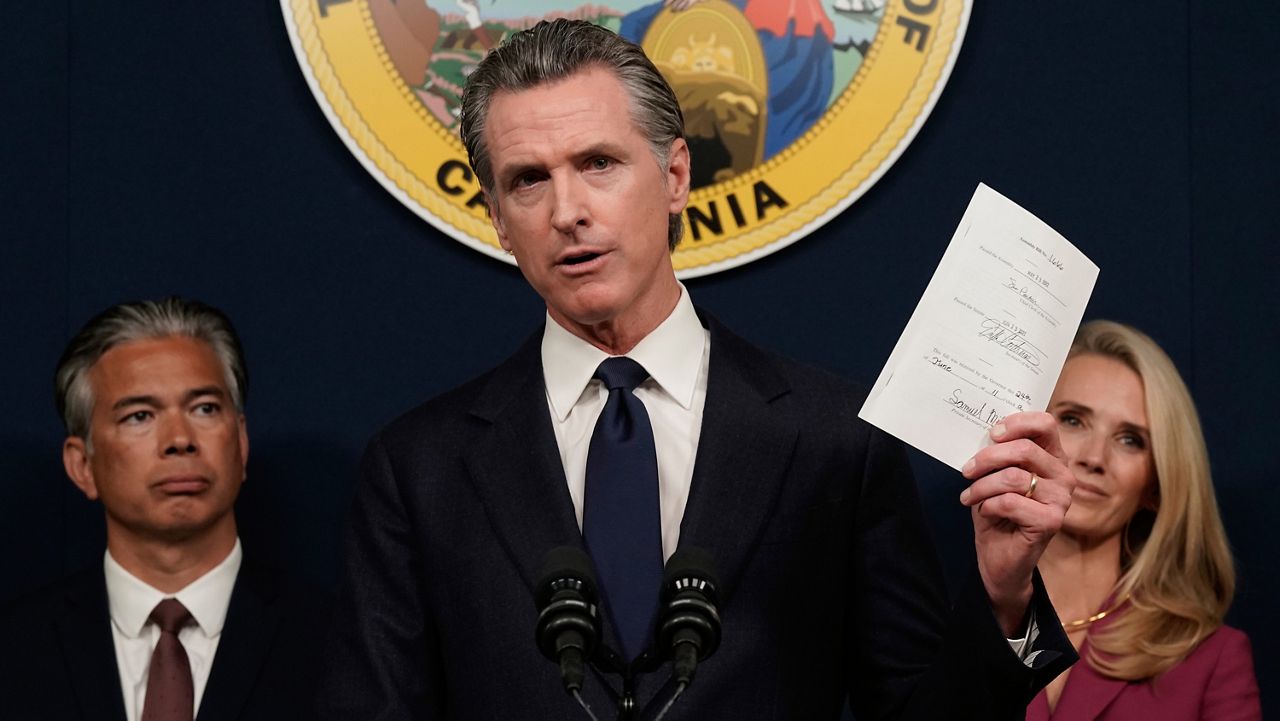SACRAMENTO, Calif. (AP) — California's coronavirus emergency will officially end in February, Gov. Gavin Newsom announced Monday, nearly three years after the state's first confirmed death from the disease prompted a raft of restrictions that upended public life.
The decision will have little practical impact on most people's lives, as most of the nearly 600 pandemic-related orders Newsom has issued since the start of the pandemic have already been lifted. And it won't affect public health orders — including a pending statewide vaccine mandate for schoolchildren that could take effect next summer.
But it does signal a symbolic end for some of the most restrictive elements of the pandemic, as it will dissolve Newsom's authority to alter or change laws to make it easier for the government to quickly respond to the public health crisis.
“The State of Emergency was an effective and necessary tool that we utilized to protect our state, and we wouldn’t have gotten to this point without it,” Newsom said in a news release, adding that the declaration will formally end on Feb. 28.
Newsom declared a state of emergency for the coronavirus on March 4, 2020, shortly after an elderly patient was the first confirmed death from the disease in California. At the time, there were just 53 cases of COVID-19 in California, and state officials were holding a cruise ship off the coast so it could test passengers before allowing them to disembark in the state.
Since then, Newsom used his authority under the emergency declaration to issue 596 pandemic-related orders. Some were small, like giving people more time to file their taxes or renew their driver's licenses. But others were life changing, including a statewide stay-at-home order that caused millions of people to lose their jobs.
At first, there seemed to be broad support for Newsom's actions in the face of a mysterious and frightening new disease. But as the virus lingered, anger and frustration over the restrictions began to build. Two Republican state lawmakers challenged Newsom's authority to issue pandemic orders — only to lose in court.
“It is past time to end the State of Emergency and focus on the enormous hardships Californians are facing in their daily lives: soaring gas and grocery prices, surging crime, and a homelessness problem that gets worse by the day," said Republican Assemblymember Kevin Kiley, who was one of the two lawmakers to challenge Newsom in court.
Of the 596 pandemic-related orders Newsom has issued, just 27 are still in effect, according to the governor's office. All of them will be gone once the emergency declaration is lifted — but Newsom said he will ask the state Legislature to make two of them permanent. One would continue to let nurses order and dispense COVID-19 medication and another would let lab workers solely process coronavirus tests.
The Newsom administration is waiting until February to end the emergency declaration, saying it wants to give state and local officials time to prepare. The administration could reverse itself, should a new variant of the disease emerge or hospitals again become overwhelmed with patients.
“While the threat of this virus is still real, our preparedness and collective work have helped turn this once crisis emergency into a manageable situation," Health and Human Services Secretary Mark Ghaly said in a statement.



